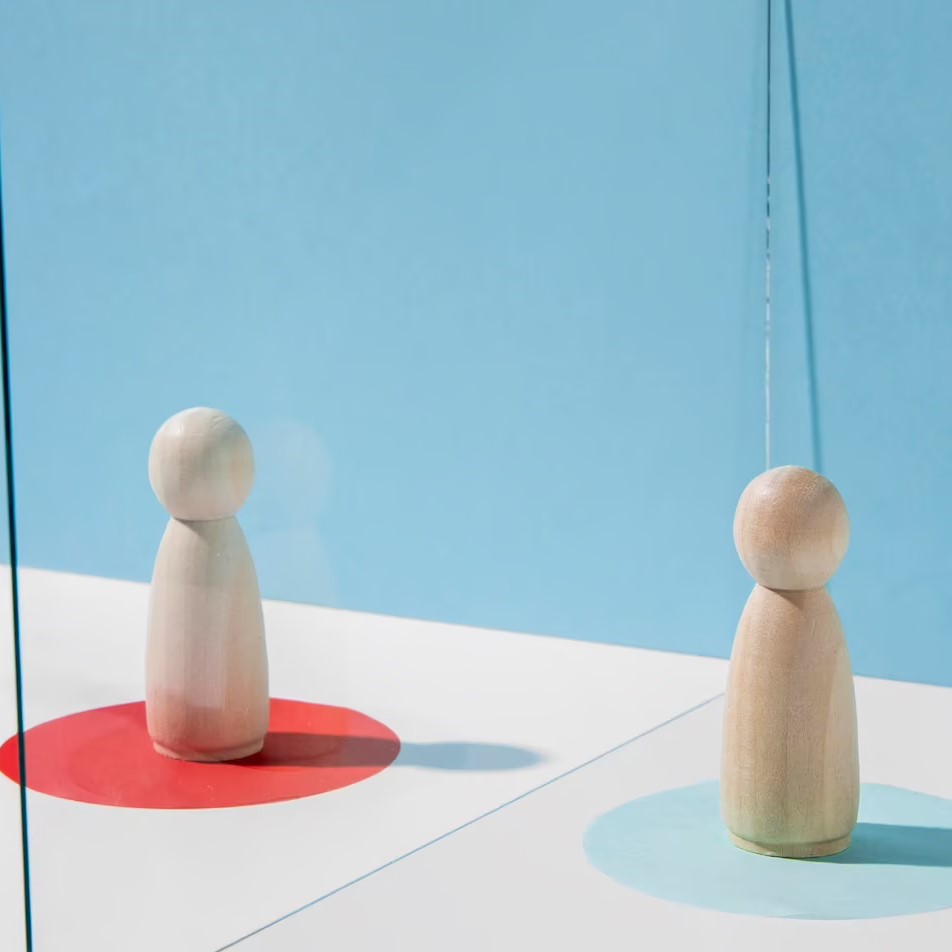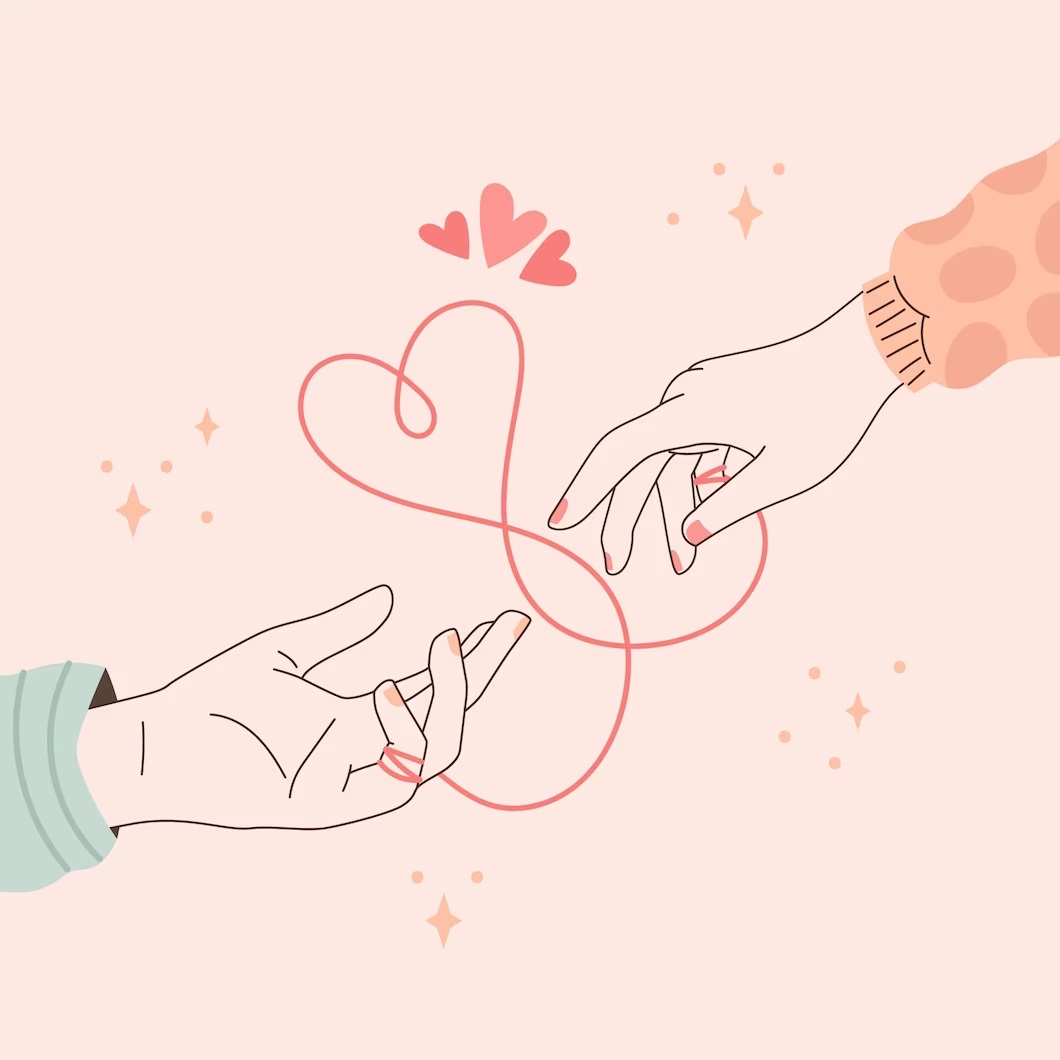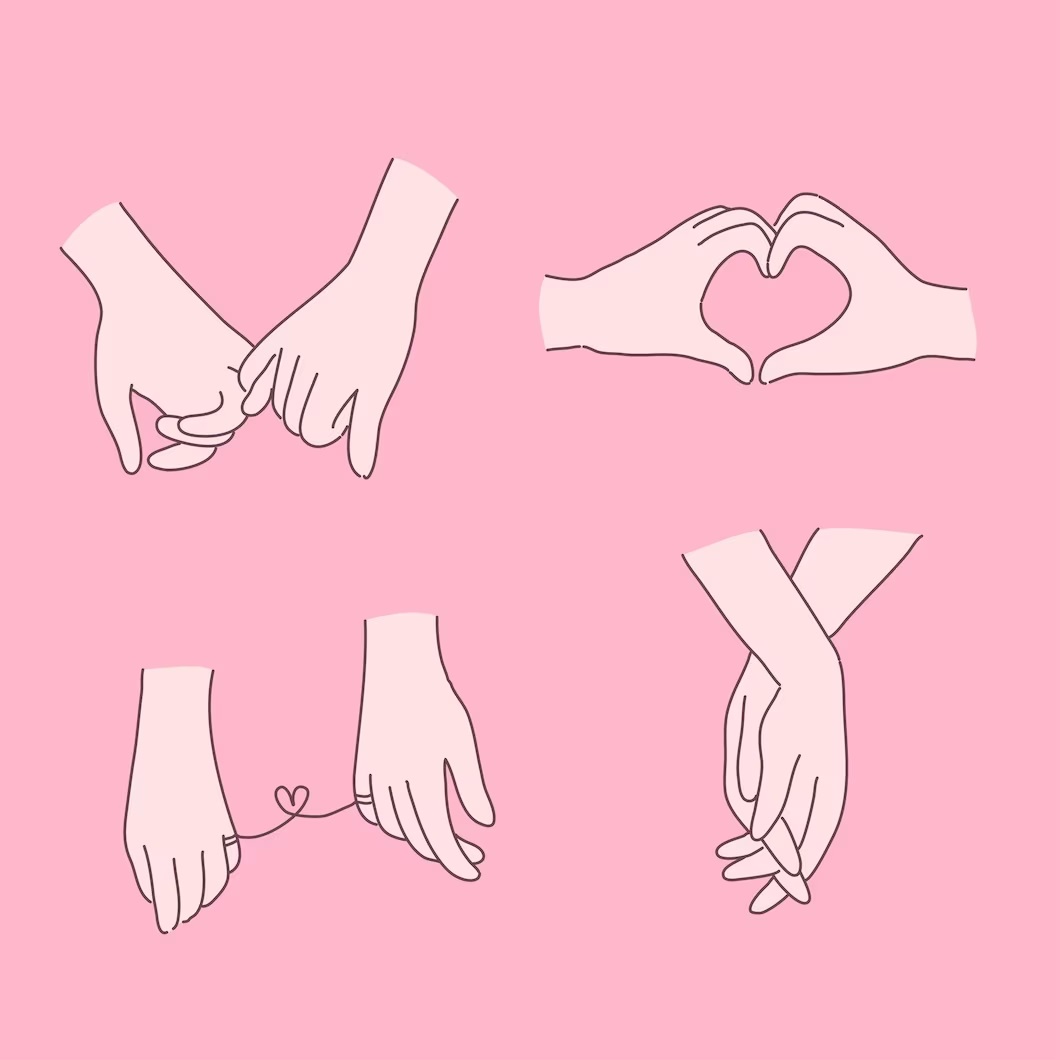The Power of Touch in Flirting and Attraction
The Benefits of Touch in Flirting
Touch is one of the most powerful nonverbal cues when it comes to flirting. It is a way to communicate attraction, interest, and intimacy without saying a word. When we touch someone we’re attracted to, it releases a chemical called oxytocin, also known as the “love hormone.” Oxytocin is responsible for creating feelings of trust, love, and bonding between two people. This is why touch is so important in building a romantic connection.
In flirting, touch can be used to test the waters and see if the other person is interested. For example, a light touch on the arm or shoulder can be a way to gauge their reaction. If they step back or look uncomfortable, it’s probably best to back off. However, if they seem receptive, it’s a sign that they may be open to further physical contact. Touch also helps to build rapport and create a sense of familiarity between two people. The more physically comfortable we are with someone, the more likely we are to feel comfortable sharing personal information and opening up emotionally.
Lastly, touch can be used to increase attraction and sexual tension. For example, a subtle touch on the small of the back or a playful tap on the hand can create a sense of electricity between two people. Studies have shown that touch can increase feelings of attraction and desire. This is because touch releases dopamine, which is responsible for creating feelings of pleasure and reward. However, it’s important to read the other person’s nonverbal cues and body language to ensure that they are comfortable with physical contact. By using touch in a respectful and consensual way, we can create deeper connections and enhance our flirting skills.
The Different Types of Touch for Flirting
Touch is an integral part of human connection, and flirting is no exception. There are several different types of touch that can be used to signal romantic or sexual interest, each with their own distinct meaning. One common type of touch is the light and playful touch, often used to initiate conversation or show interest. This type of touch can include gentle brushes or taps on the arm or shoulder, and is often accompanied by a smile or a playful tone of voice.
Another type of touch commonly used in flirting is the more intimate touch, which can range from a slight caress to a full-on embrace. This type of touch is typically reserved for more established relationships or for when both parties have made it clear that they are interested in exploring a physical connection. The intimate touch may also be accompanied by more suggestive language or gestures, such as stroking hair or leaning in for a kiss.
Yet another type of touch used in flirting is the teasing touch, which can vary in intensity depending on the situation. This type of touch is often used to build sexual tension or to playfully signal interest, and can include everything from a light tickle to a more aggressive grab or pull. The teasing touch is often employed by those who are confident in their attraction, and can be a powerful tool for expressing desire and igniting passion.
Unconsious Signalling through Touch
Unconscious signaling through touch is an incredible phenomenon that affects our everyday lives. Research shows that the way we touch, particularly in close relationships, can communicate a wide range of emotions and intentions without uttering a single word. Touch has the ability to convey warmth, love, empathy, and even aggression. It is said to be one of the most fundamental human forms of communication that can bring people closer together or push them apart.
The power of touch lies in its ability to stimulate the release of oxytocin, a hormone that has been linked to bonding and social connection. Studies have shown that prolonged hugs, hand-holding, and other forms of physical touch can help to reduce stress and anxiety, lower blood pressure, and even boost the immune system. Touch can also evoke positive memories and emotions, making it an important factor in romantic relationships and friendships alike.
However, touch can also be used as a tool for manipulation and coercion. Unwanted touching, particularly in intimate settings, can be a violation of personal boundaries and lead to feelings of discomfort and disempowerment. It is important to recognize and respect personal boundaries when it comes to touch. Consent and communication are crucial components of healthy and respectful relationships both in and out of the bedroom. Understanding the power of touch and how it can impact our emotional and physical wellbeing is essential for building strong and meaningful connections with others.
The Power of Eye Contact and Touch
Eye contact and touch are powerful communicators of emotions and intentions. Studies have shown that prolonged eye contact can increase feelings of connection, trust, and empathy between individuals. Additionally, touch can increase feelings of comfort, safety, and affiliation between people. These nonverbal cues are so powerful that they can even influence our decision-making processes and affect our relationships.
However, it is important to note that the meanings behind eye contact and touch can vary depending on context and culture. For example, in some cultures, prolonged eye contact is seen as a sign of aggression or disrespect. In other cultures, touch can be seen as inappropriate or unacceptable. It is vital to be aware of cultural differences when interpreting or using these cues in different settings.
In summary, eye contact and touch are powerful tools in communication and can foster feelings of connection and understanding. However, it is important to use them appropriately in context and to be aware of potential cultural differences in meaning. With conscious use, eye contact and touch can enhance our relationships and create positive connections with others.
How Touching Translates into Flirting
Touch is a fundamental aspect of human communication. It is universally recognized as a powerful means of conveying emotions and establishing connections. Different cultures place varying levels of importance on touch, but it remains a crucial part of interpersonal communication across the globe. Studies have shown that touch can trigger the release of oxytocin, a hormone that fosters trust and strengthens social bonds. In romantic settings, touch is often used as a means of flirting, conveying interest, and building attraction.
Flirting through touch involves using subtle cues and gestures to communicate interest and attraction. This can include playful touches, lingering glances, and suggestive body language. Many people use touch as a way to establish physical intimacy and to express affection. However, the use of touch as a flirting technique can also be misinterpreted or resisted. It is important to be respectful and attuned to the other person's reactions and boundaries.
Cultural norms and personal preferences can play a role in determining how touch is used in flirting. In some cultures, physical touch and proximity are more closely associated with flirting and romantic interest than in others. Similarly, individual preferences for touch can vary widely. Some people feel comfortable with more physical contact, while others may be much more reserved. Ultimately, the success of flirting through touch will depend on the context, the individuals involved, and their level of comfort and interest.
Physical Attraction through Touch
Physical attraction is an essential aspect of forming intimate relationships. It is an intuitive connection that occurs when two people are attracted to each other on a fundamental level. Touch is a powerful physical tool that can be used to express this attraction. When two people touch, they are communicating with each other on a deep, emotional level. Touch helps to build trust and intimacy between two individuals, and it has been shown to have beneficial effects on mental health and overall wellbeing.
Moreover, touch can be used to convey a range of emotions, from love and affection to anger and frustration. Understanding these different forms of touch is essential for building successful relationships. Holding hands, hugging, and cuddling are all examples of touch that convey love and affection. However, hitting, pushing, or using aggressive touch can communicate anger or aggression. It is important to be mindful of the type of touch we use in our interactions with others.
Overall, physical attraction through touch is an essential aspect of building intimate relationships. It is a means of communicating with others on a deep, emotional level that is essential for building trust and intimacy. By understanding the different forms of touch, we can effectively build loving relationships that benefit our mental and physical wellbeing. Whether through holding hands, hugging, or cuddling, touch is an essential tool for building physical and emotional connections.
The Role of Receptivity in Touching During Flirting
Touch is an essential mode of human interaction, and it can have a significant impact on how people perceive and communicate with each other. Flirting involves a certain amount of physical touch, which can range from casual and non-threatening to playful and sexual. The level of intimacy of the touch is often determined by the level of receptivity of the person being touched. Receptivity is the willingness or readiness to receive or accept something, in this case, a touch or physical gesture.
When flirting, individuals need to be aware of their partner's level of receptivity to touch. This can be observed through nonverbal cues, such as body posture, facial expressions, and eye contact. A lack of receptivity can lead to discomfort, rejection, or even offense, whereas a high level of receptivity can lead to a positive and enjoyable experience. Therefore, it is essential to read and respond to your partner's reactions to your touch during flirting.
Moreover, it is crucial to establish a mutual understanding of the level of physical intimacy before engaging in any physical touch. It is essential to respect one another's boundaries and avoid any behavior that could make the other person feel unsafe or uncomfortable. Communication plays a vital role in establishing these boundaries, and it is essential to have open and honest discussions about physical touch in a relationship. Ultimately, the role of receptivity in touching during flirting cannot be overemphasized, and individuals must always prioritize their partner's comfort and safety over their desire to engage in physical contact.
The Role of Touch in Mutual Attraction
Touch is an essential element in building and maintaining attraction between individuals. It allows people to communicate in a nonverbal manner and convey their intentions and feelings. When two individuals touch, it releases hormones like oxytocin and dopamine that create a sense of pleasure and happiness. This has been proven to be particularly important during romantic or sexual situations, as touch can increase arousal and make individuals more receptive to advances.
In addition to the release of positive hormones, touch can also reveal a lot about a person's personality and intentions. The location, duration, and intensity of touch can provide insights into an individual's confidence, assertiveness, and interest level. For example, a light touch on the arm during a conversation can suggest genuine interest and engagement, while a lingering touch on the thigh during a date can indicate sexual attraction. Similarly, a person who is more comfortable with touch may be perceived as more sociable and approachable.
However, it is important to note that touch is not always welcome or appropriate. The context and consent are crucial factors in determining the appropriateness of touch. Unwanted or aggressive touch can be perceived as invasive and threatening, which can lead to a negative emotional response. Therefore, individuals must be aware of their own touch boundaries and respect those of others to ensure that mutual attraction is built in a safe and comfortable manner. With a clear understanding of the role of touch, individuals can effectively navigate the often complicated and nuanced world of attraction.
Exploring the Impact of Touch on Physical Attraction
The power of touch in physical attraction cannot be overstated. It is a primal form of communication that has been hardwired into our brains since the beginning of time. Touch not only helps us to connect intimately with others, but it also has a profound impact on how we perceive others. Research shows that touch can increase the level of attraction felt between two individuals, making it an essential ingredient for building strong and meaningful relationships.
Touch has been shown to release a hormone called oxytocin, also known as the love hormone, which plays a crucial role in bonding and intimacy. When oxytocin is released, individuals feel more trusting, empathetic, and relaxed in each other's presence. This hormone is released not only during physical touch but also during eye contact, verbal communication, and other forms of social interaction. More oxytocin in the body means a higher level of physical attraction, which is why touch is so important in building and maintaining healthy relationships.
The importance of touch in physical attraction can also be seen in the lack of it. When individuals feel neglected, rejected, or ignored, they become distant and disconnected. This lack of touch can lead to feelings of loneliness, depression, anxiety, and even physical illness. Moreover, studies have shown that people who lack physical touch are more prone to risky behavior, including drug addiction, self-harm, and aggression. Therefore, it is critical to recognize the significance of touch in physical attraction and strive to foster meaningful relationships that include regular physical touch and intimacy.
The Importance of Non-Verbal Cues in Touch While Flirting
Non-verbal cues play a crucial role in human communication, and touch is one of the most potent forms of non-verbal interaction. Touch is a versatile means of conveying emotions and feelings, ranging from affection to aggression. Those who engage in flirting often rely on touch as a way of conveying their interest and attraction to the other person. Touch can be used to create intimacy and establish trust, among other things. In flirting, it can be used to tease, arouse, and build anticipation, leading up to more intimate contact.
Studies have shown that touch can activate the same regions of the brain that are involved in reward and pleasure. Touch releases oxytocin, a hormone often referred to as the "cuddle hormone," which is associated with bonding, trust, and social affiliation. Touch can also reduce stress, lower blood pressure, and improve overall well-being. These physiological effects of touch make it an essential part of human connection, and its importance is magnified in flirting.
However, touch is a delicate form of communication that requires some level of mutual trust and consent. Different people have different boundaries when it comes to touch, and what might be perceived as a friendly gesture by one person could be experienced as invasive or uncomfortable by another. Therefore, it is crucial to be aware of how touch is received by the other person and to adjust accordingly. Non-verbal cues, such as facial expressions, vocal tone, and body language, can offer clues about the other person's level of comfort or discomfort with touch, and it's important to pay attention to these cues while flirting. A misread or ignored cue can lead to an awkward or even unpleasant encounter. Consequently, it's crucial to be mindful of touch and to use it responsibly while flirting.
Developing Comfortability with Touching in Flirting
Developing comfortability with touching in flirting can be a tricky subject. It requires a delicate balance between being assertive and respecting boundaries. One approach is to start small and gradually increase touch over time. For example, a light touch on the arm during conversation or a playful tap on the shoulder can be good starting points. It's important to pay attention to the other person's body language and verbal cues to ensure they are comfortable with the level of touch.
Another important factor in developing comfortability with touching in flirting is building trust and rapport with the other person. Spending time getting to know them and building a connection can help create a more comfortable and safe environment for physical touch. It's also important to communicate openly and honestly about boundaries and comfort levels. This can prevent misunderstandings or discomfort that can arise when physical touch is not discussed.
Above all, it's important to remember that physical touch should always be consensual and respectful. The goal of developing comfortability with touching in flirting is to enhance mutual attraction and connection, not force physical touch on someone who is uncomfortable with it. By approaching physical touch in a respectful and mindful way, it can be a positive aspect of flirting and deepen the connection between two people.
Using Strategic Touches to Aid Flirting
Flirting is an art, and it involves a great deal of strategy. When you are flirting with someone, you want to leave a positive impression on them. That means being charming, witty, and confident. However, there is one aspect of flirting that is often overlooked: the power of touch. Touching can be a powerful tool in flirting. It can help you create a connection with someone and communicate your interest in them in a non-verbal way.
One crucial thing to keep in mind is that not all touches are created equal. There are appropriate times and places to touch someone when you are flirting. A light touch on the arm or hand during a conversation can create an intimate connection that signals your attraction. However, grabbing someone's arm or being too physical too soon can come across as aggressive and turn the other person off. Understanding the boundaries of appropriate touch takes practice and mindfulness.
Another essential aspect of using touch to aid flirting is gauging the other person's response. If they seem receptive to your touch - they lean in, smile, or touch you back - it is a good sign that they are interested. However, if they pull away, seem uncomfortable or stiff, you should take it as a cue to back off. Overall, using strategic touches to aid flirting can be an effective way to communicate your interest in someone. However, it takes time, practice, and sensitivity to read the other person's cues and respond appropriately.
The Power of Touch in Flirting and Attraction
Touch is a powerful tool in the art of flirting and attraction. It can communicate a wide range of emotions and intentions with just a simple gesture. Lightly brushing someone's arm or grazing someone's hand while talking can create a sense of intimacy and connection, which is essential in building romantic relationships. Moreover, touching can also convey confidence and assertiveness, which is attractive to many people. Subconsciously, we are programmed to respond positively to physical touch, which is why it's such a potent tool in flirting.
However, it's important to note that touching someone without their permission can be invasive and disrespectful. It's crucial to read someone's body language and verbal cues before initiating any physical contact. A person who is uncomfortable with touching may exhibit physical signs like pulling away or crossing their arms, so it's essential to respect those boundaries. Inconsensual touch can create discomfort and push someone away, so only engage in physical contact if you're sure the other person is comfortable with it.
In conclusion, touch can be a valuable tool in flirting and attraction, but it's equally essential to use it wisely and respectfully. It's crucial to be aware of boundaries and read someone's cues before initiating any physical contact. Used appropriately, touch can create an emotional bond and set the stage for a successful and meaningful relationship.



